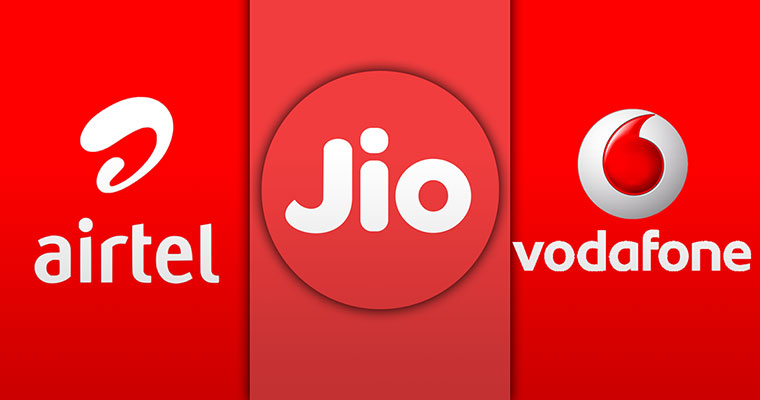
Jio gains from Vodafone's subscriber scare as market remains in churn
India’s telecom industry continues to be in a churn, roiled not just by policy overhang but also by shifting subscriber preferences. The issue of how much each of the three incumbent telecom companies owe to the government in past dues continues to hang fire.

India’s telecom industry continues to be in a churn, roiled not just by policy overhang but also by shifting subscriber preferences. The issue of how much each of the three incumbent telecom companies owe to the government in past dues continues to hang fire.
While the government believes Bharti Airtel, Vodafone Idea (VIL) and Tata Teleservices together owe it nearly ₹90,000 crore in adjusted gross revenue (AGR) dues, the telcos themselves have said their calculations show the amount due is a fraction of this figure.
This tug of war over money is happening even as the Supreme Court deadline of March 17, by which telcos must clear all dues, is coming nearer.
The biggest possible fallout of the huge AGR dues could be the winding up of VIL, which accounts for about 29% of subscribers now and has said repeatedly it would not be able to sustain the approximately ₹50,000 crore payout the government expects from it.
Related news: Why disinvestment of loss-making firms should be govt’s top priority
On its part, the government is seen working towards a solution so that the entire industry gets a reprieve.
Even as VIL continues to fight for survival, the latest data from sector regulator Telecom Regulatory Authority of India (TRAI) shows that yet another battlefront is already open for the telco as it continues to lose subscribers.
The three private operators currently operational are Reliance Jio Infocomm (RJio), Bharti Airtel, and VIL. As per TRAI, while RJio continued to add subscribers in December and maintained its leadership in subscriber market share, Bharti Airtel and VIL continued to lose subscribers.
It is true that the rate of subscriber addition for RJIo also slowed considerably compared to November, but it still did not lose subscribers, reporting a net addition of over 82,000.
Related news: Bharti Airtel requests tax leniency; govt set to play balancing act on AGR dues
VIL, on the other hand, lost a whopping 3.6 million subscribers in a single month while Bharti Airtel lost about 11,000.
TRAIs data from the past 12 months shows, the subscriber share of VIL shrank from 35.61% in December 2018 (over a third of the market) to 28.89% of the market (just over a fourth). During this period, India’s total wireless subscriber number also shrank by about 25 million and it is easy to see how RJIo is benefiting from a market with shrinking subscriber base and weaker players.
At the end of December 2018, VIL had a total subscriber base of 418.7 million as compared to Bharti Airtel’s 340.2 million and RJIo’s 280 million. However, it fell drastically by the end of December 2019, leaving VIL to struggle with 332.6 million subscribers, Bharti Airtel at 327.3 million, and RJio at 370 million.
This indicates that nearly 86 million subscribers have left the VIL network during the 12 months under review, whereas RJio has acquired nearly 90 million additional subscribers during this period even as overall, the total number of subscribers has fallen in these 12 months.
Related news: Vodafone Idea pays ₹1,000 cr to telecom dept towards dues, says source
VIL’s loss is RJio’s gain – Bharti Airtel lost only a fraction of its loyal subscribers.
The loss in subscriber market share for VIL and the consequent gain for RJio depicts the rapid churn in the market as a comparative newbie RJio continues to outsmart the two incumbent telcos through freebies. For VIL to survive, retention of subscribers remains key, even if it successfully negotiates the tricky AGR issue.
Analysts have warned that exit of a significant player like VIL would distort the market, making it a virtual duopoly of RJio and Bharti (since state-owned BSNL has just about 10% of subscriber market share).
Not only will subscribers eventually suffer under a duopoly with more frequent tariff hikes and possible dip in service quality, but any consolidation in the market would also be detrimental to government finances as well as state-owned banks. The government would fail to get the thousands of crores in dues while banks would be left holding the can as telcos are heavily indebted.
Related news: Telecom crisis: 75% of telcos’ total dues is interest and penalties
According to analysts, in the event of VIL exiting, the government would lose roughly ₹90,000 crore of spectrum dues VIL owes it, in addition to the AGR dues. The company is believed to owe another ₹25,000 crore to Indian banks.
In a bid to arrest the fall of VIL and help the industry improve its earnings, TRAI is now being urged to come up with a floor price for telecom tariffs. This move would prevent price undercutting by telcos because it would deter each telco from pricing services below the floor.
In December last year, the TRAI had floated a consultation paper to fix a floor price for voice and data services.
The government seems to be considering other measures to prevent further consolidation in the market and eventual exit of VIL. These include offering a relief in the quantum and timeline for repayment of AGR dues and relaxation in some other dues towards telcos.


